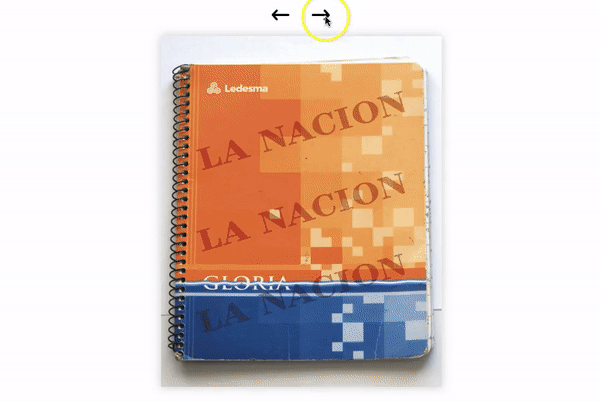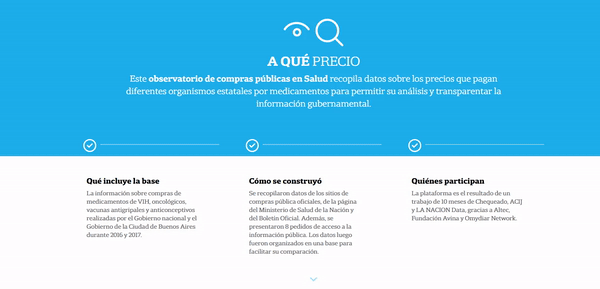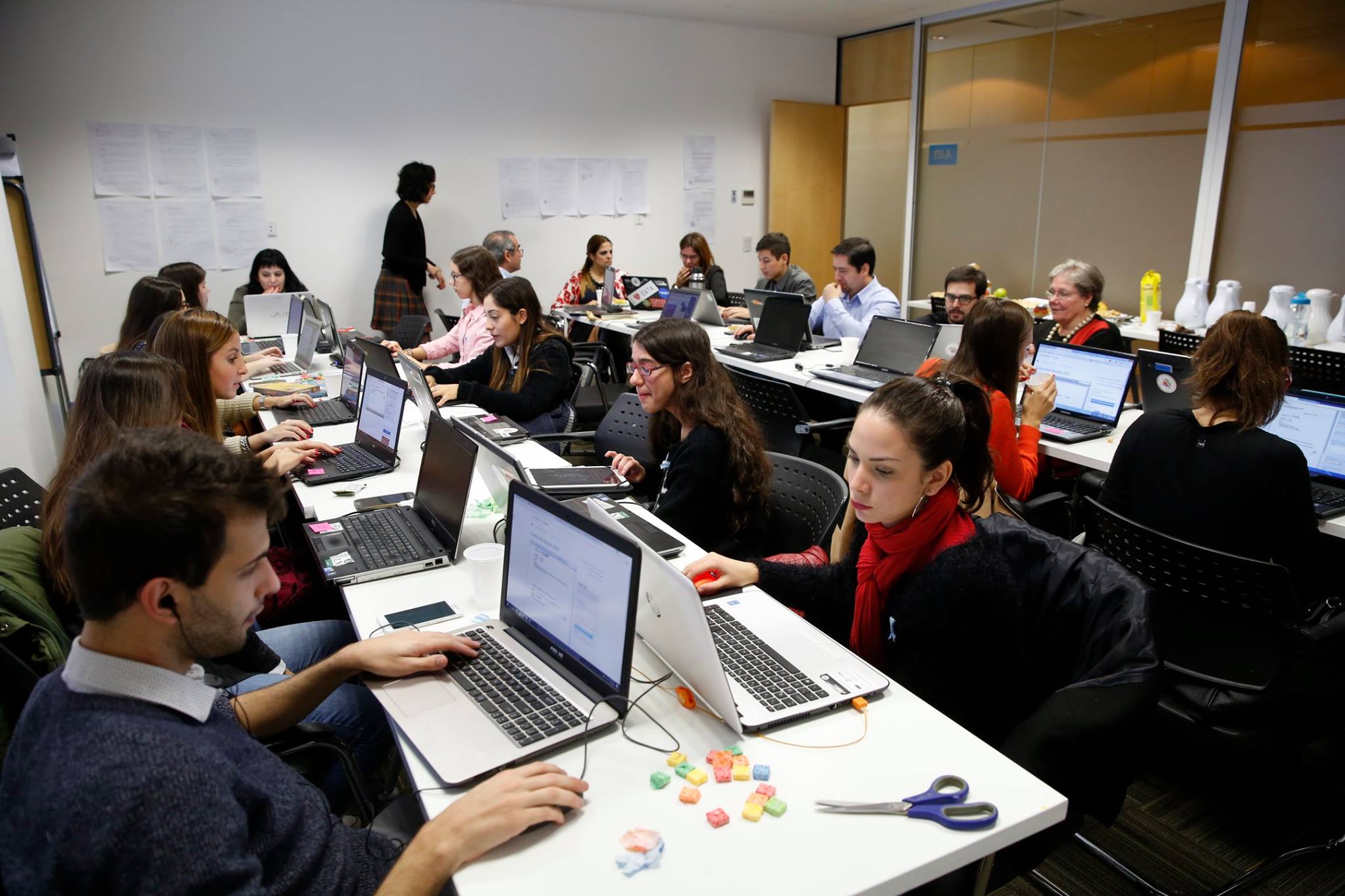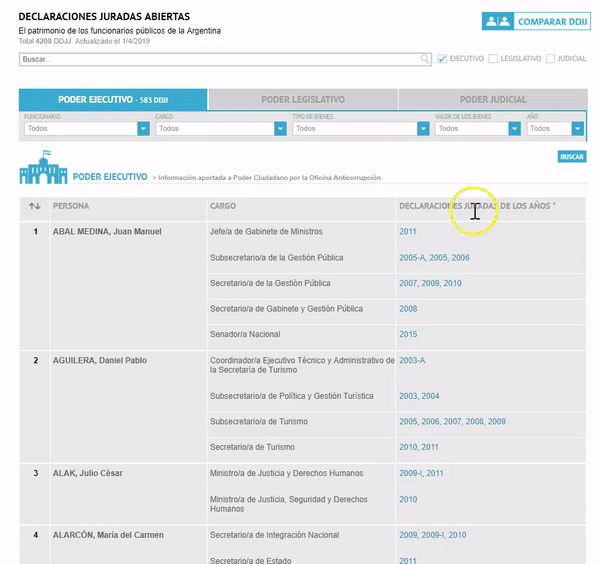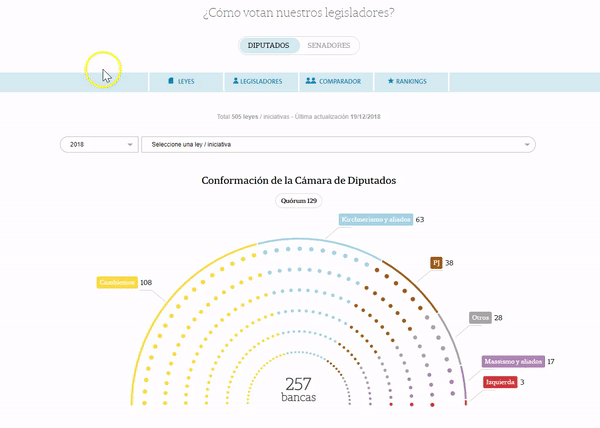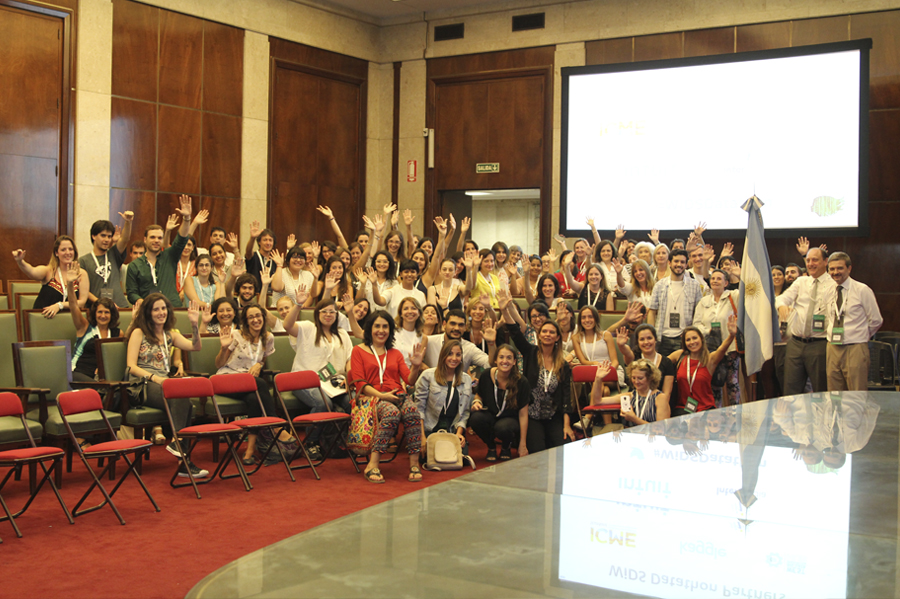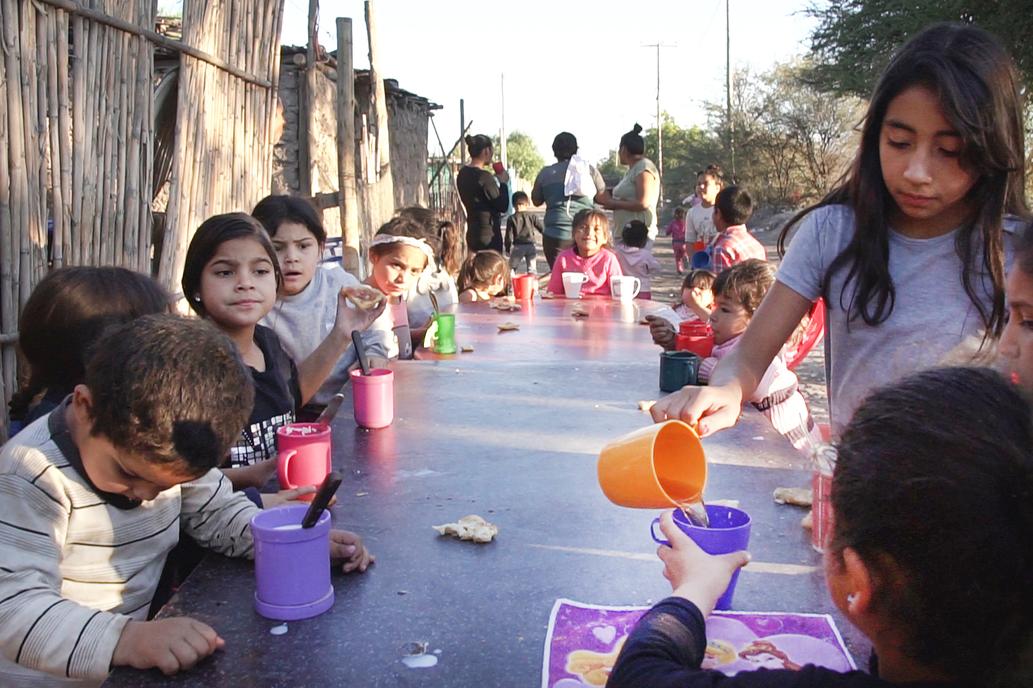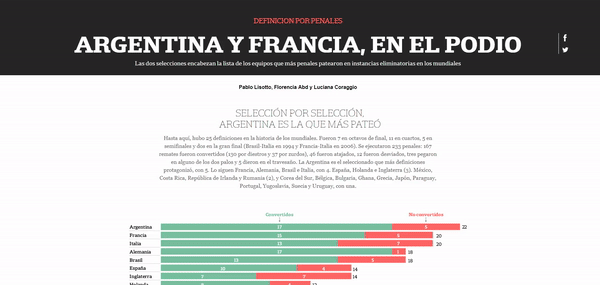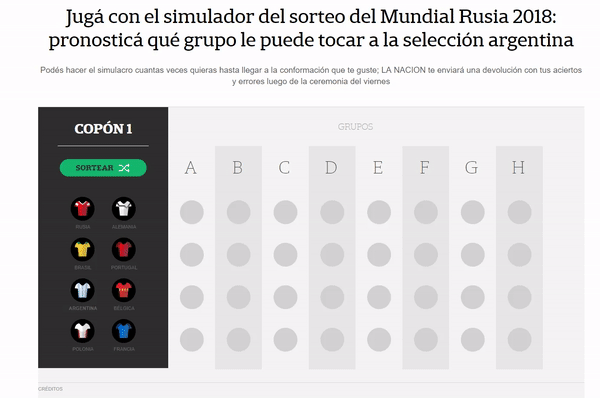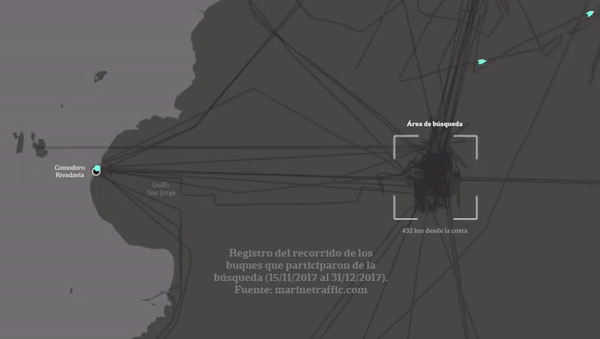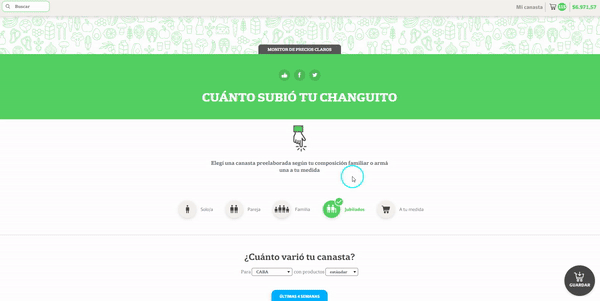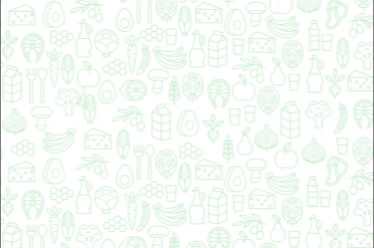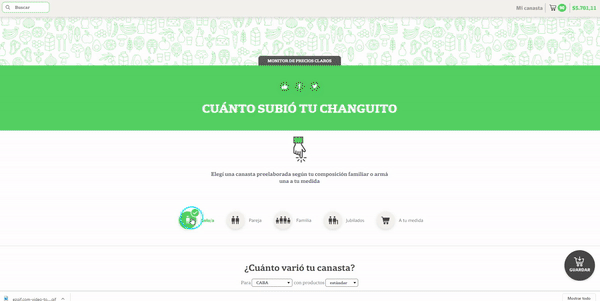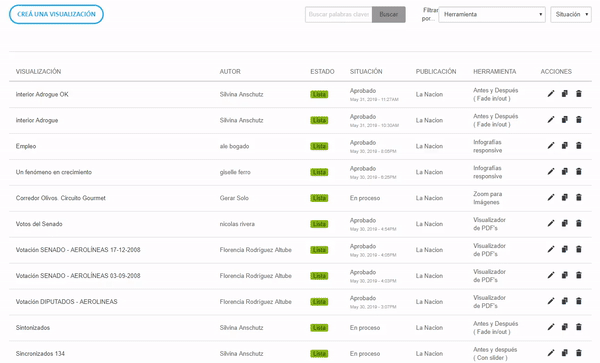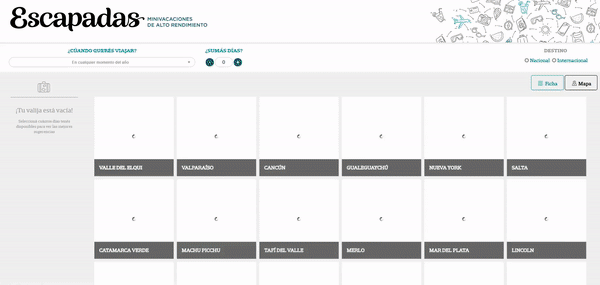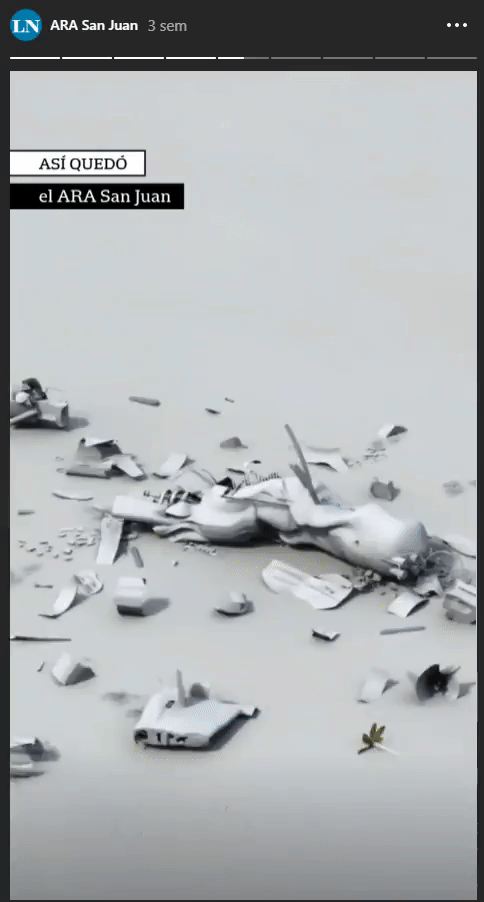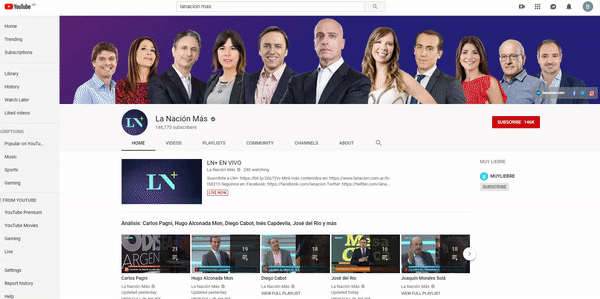La Nación was founded in 1870 by former President Bartolomé Mitre. It is the most prestigious national newspaper in Argentina, well known for its quality journalism, investigative reporting and editorial integrity. It’s Brand has expanded and today it has the website with the mobile and social media versions, the Tv news channel, and several magazines including Hola!, and Argentine Rolling Stone.

In 1995 we launched our website and became the first massive online newspaper in Argentina. Since then, the main premise of lanacion.com is to maintain journalistic excellence while taking advantage of new technologies as an indispensable tool for innovation.
lanacion.com has 32,500,000 unique browsers per month and this year became the first online media in Argentina to achieve 200,000 paid subscribers. We are part of the Group of Newspapers of America (11 main newspapers in Latin America Consortium) and we are known for being the most innovative digital media of Latin America and the most awarded as well.
This year was special because our Driver’s Notebooks investigation, won the The International Prize King of Spain (Rey de España), and the National Investigative Journalism Prize of the Argentinean Journalism Forum (FOPEA). Also, this year we won the World’s Best Designed Newspaper award of the Society for News Design (SND) and our data unit, LA NACION DATA was finalist in 3 categories of the GEN Data Journalism Awards.

INVESTIGATIVE REPORTING:Investigative journalism is the core of our newsroom. We work with editors and journalists of each section who are interested in public transparency and willing to innovate with new tools and storytelling techniques. We specialize in deep digging and research, following breadcrumbs which lead to rigorous and powerful stories.
A recent example of this is the The Driver’s Notebooks of Corruption investigation. This investigation formally began on January 8, 2018, when Diego Cabot, an investigative journalist from La Nación was given eight notebooks that exposed Argentina´s greatest corruption scandal ever. We built a structured dataset from this handwritten notebooks, we transcribed all the information into an Excel database and began analyzing each one of the records. Then, we verified and checked the information by crossing it with other multiple sources such as official and company records, corporate information, public works contracts. This verification process was used to carry out a strict process of standardization and structuring of data in which currency and descriptions were unified and names and addresses were standardized.
So far, 73 individuals have been prosecuted in this case (40 have been imprisoned and several continue and another 90 businessmen are waiting for prosecution), including a former President, the entire office of the Ministry of Planning and the main public works contractors of the country. About 40 persons repented and confessed their crimes. US$ 600 million were seized.
READ MORE ABOUT THIS INVESTIGATION: CLICK HERE
DATA JOURNALISM AND OPEN DATA FOR CHANGE: We also have a special unit destined for this job called LA NACION DATA who was chosen the Best Data Journalism Team Portfolio in the GEN Data Journalism Awards 2019 and became finalist in two other categories: data visualization of the year and investigation of the year. The team promotes Open Data Journalism for change, in order to better serve our audiences using data to discover and tell stories. They encourage the use of open data and access to information in Argentina as evidence to keep governments accountable, enhance transparency and allow citizen’s collaboration in the process of journalism.
Much of their work and effort is invested in building datasets from scratch, cleaning, structuring and normalizing to make them accessible for our newsroom and our users in Argentina. But their objective is also to produce long-term investigations that encompass a multiplicity of topics of interest with the intention of producing a political and social impact.
They work by projects and in multi-skilled teams to provide data as service in the daily reporting and to build innovative tools and data platforms for open collaboration. They even partner with NGO’s to promote civil participation in the process of journalism and because they never get tired of learning something new, they love sharing knowledge through hackathons and hosting multiple events.
An example of this is the open Statement of Assets (Affidavits) website of the main officers of government. Every year LA NACION DATA access hundreds of affidavits through FOIA requests. The problem is that most of the data is handwritten on a sheet of paper, so they organized hackathons in alliance with NGOs: Poder Ciudadano, ACIJ and Directorio Legislativo to upload all the information into an open source administrator we created for such purpose.
These are meetings held for several days in the newsroom where students and volunteers participate to build this dataset together. In total, there are already more than 4,000 published affidavits typed in our unique web site, that are constantly reused to investigate cases of corruption or to provide information on each new Government officer. This data is presented in open formats as well.
Furthermore, keeping the team and our newsroom updated, we are now focused in learning how data science can help society and journalism for good, As this happens LA NACION DATA supports and co-organized the Global Women in Data Science (WIDS) Conference in Buenos Aires 2018 and 2019. In this event journalists, data scientists, engineers and programmers meet in order to promote the inclusion of women as speakers in Data Science in different areas, industries and services in Argentina in order to inspire more women in STEM and in technology.
READ MORE ABOUT LA NACION DATA: CLICK HERE
PUBLIC SERVICE: We produce journalism that makes a difference and motivates the audience to act and improve a community’s welfare and quality of life. We are devoted to highlight stories that raise awareness among political leaders and civil society. We want to achieve a better future for all and we understand that it is our responsibility to act and be involved in the global challenges we face: poverty, inequality, climate, justice, prosperity, and peace and justice.
We even have a special unit called Fundación La Nación that produces community service journalism and actions to raise society’s awareness of different social problems, providing new perspectives, knowledge and approaches to them. They even make visible and work together with different causes and initiatives promoted by social organizations, companies and Government that are destined to achieve a more just and inclusive society.
A recent example of our work is our Hambre de Futuro (“Hungry for the Future”) project which explores childhood poverty in the most vulnerable locations in Argentina.We hoped that the project would raise awareness among political leaders and civil society and put the structural problem of childhood poverty on local agendas. Our mission was to promote the protection of children’s rights by spreading their voice to help them meet their basic needs and secure their survival, protection and development
VISUAL DIGITAL STORYTELLING: We make innovative efforts in telling stories through original, creative and interactive visualizations and graphics. The idea is to create unique and quality storytelling products that clearly convey the story’s topic or event. We give special attention in bringing stories and data to life so we even created “format meetings” with one delegate of each section, developers and data team members.
An example of this is our FIFA World Cup Russia 2018 coverage. The objective was to inform and engage the audience in two different stages. The first stage consisted of a series of playful and social visualizations prior to the beginning of the World Cup. The articles were strategically conceived according to the schedule prior to the event: selection of the 23 players that were going to travel to Russia, the 11 players that were going to play on the first match, a draw simulator of the different possible groups in which each country soccer team could be selected and their possible opposing team, and a result forecast for the people to play with and bet.
Instead, the second stage was focused on the real time results and matches: a fixture with the times, teams and matches, a calculator for the audience to estimate results and evaluate the possibility of passing to the next round, a game that allows the audience to score the players after each match, a live statistics visualisations of the amount of shoots and passes between players and their positions on the field throughout the game, the possibility to vote for the best goal of the world cup and a monitor of the speed and the distance runned by each player.
READ MORE ABOUT THE WORLD CUP COVERAGE: CLICK HERE
Another example of visual digital storytelling is the piece we created a year after the disappearance of the submarine ARA San Juan. To commemorate the first anniversary of the tragedy of the ARA San Juan Submarine, a scrollytelling was made to present all the details and data about the sinking of the submarine. It was one of the most tragic events of the past few years as it involved the death of 44 crewmen that were on board. The purpose was to develop a visual piece with new data from the year-long official investigation to shed light on some of the uncertainties and controversies of the case.
It included data from official naval reports, videos of the crewmen families-specially produced and created for the occasion-, audios of the official naval announcements, 3D animations of the submarine made with two programs called Carrara and Blender, and satellite geolocated data of the search operations collected with Marine Traffic vessel platform.
READ MORE ABOUT THE SUBMARINE: CLICK HERE AND HERE
AUTOMATED DATA-DRIVEN CONTENT: The project was born in the context of 2017 elections. With the purpose of creating news articles automatically from datasets using different templates, we put into practice the automated technology which allowed us to cover the real-time election results in the 530 districts of the Argentine territory.
We knew that the technology developed for the occasion could mean an opportunity to help the newsroom in its usual work process. Specially, in repetitive news that are data driven and that could be supported with series and graphs. So, we began to produce daily and weekly articles, automated through a systematic collection of data from different sources and topics.
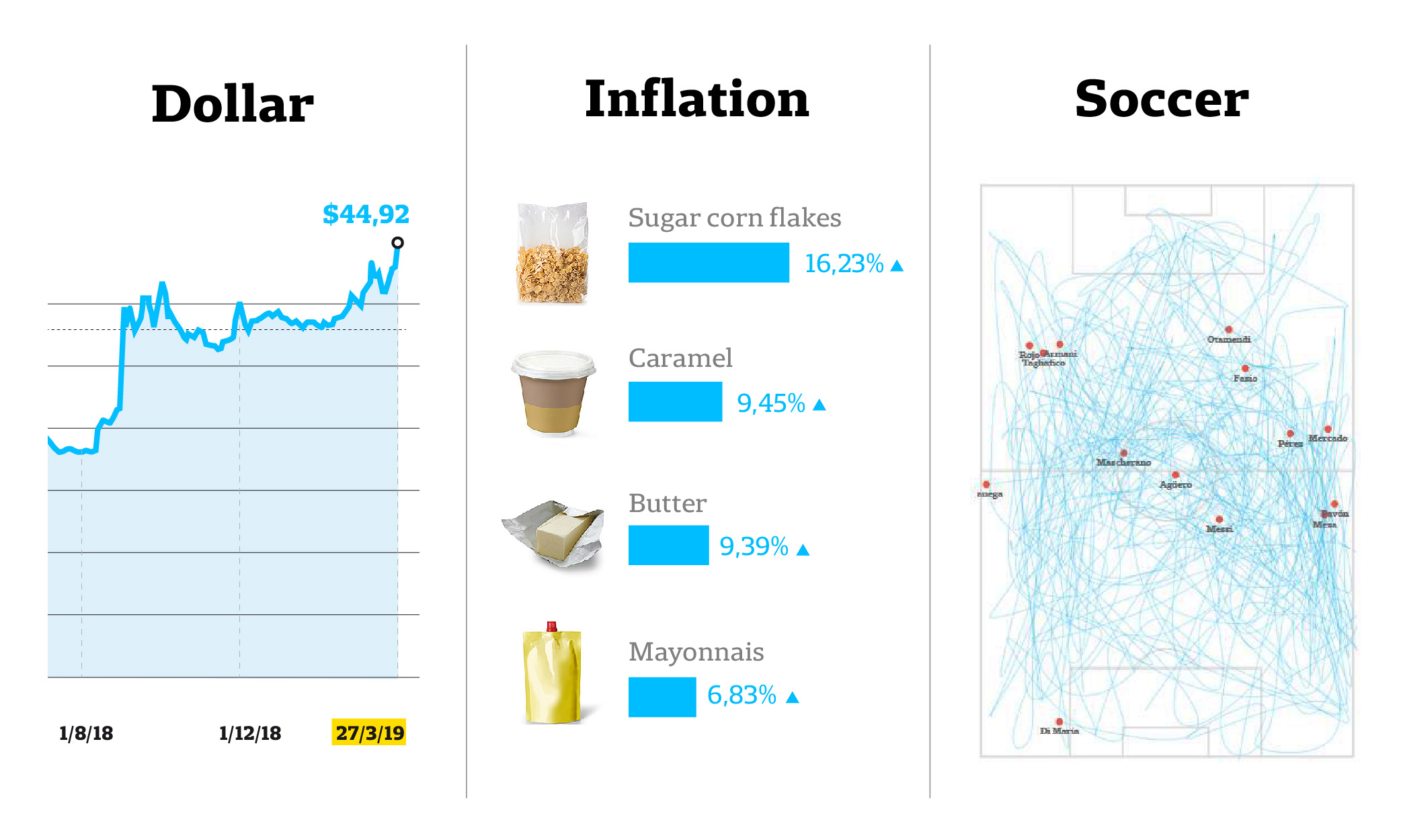
All the automatically generated articles are accompanied with infographics, images and interactive visualizations that are created from the automatic loading of data in Google Spreadsheets.
The first subjects covered by this project were thought in terms of the interest of the Argentine citizens: dollar, inflation and Argentine football. Three central subjects in the everyday life of our country.
The importance of this project is that we found a way to work in teams with our editors that understood how technology and data can help them better serve audiences and reach larger audiences thanks to a broader coverage. We developed an in-house automatization platform customized to each data source and worked with our graphics area to have the data visualizations ready.
Work that was repetitive and tedious became, thanks to this process and technology, a successful and efficient task that preserves the touch of quality journalism. The choice of topics helped change the newsroom culture since several traditional journalists are experiencing the benefits of technology and data to support their stories.
READ MORE ABOUT OUR AUTOMATED CONTENT PROJECTS: CLICK HERE
USER EXPERIENCE: We pay special attention in user interface and interactive innovation and how each helped our users. We think that special content should be presented in creative and useable applications and platforms.
A perfect example of this is LA NACION´s SHOPPING CART: monitoring 2600 supermarkets and 170 product prices.
In March 2018, Argentina was one of the five countries with highest inflation according to the International Monetary Fund. The index climbed up to 47.6% anually according to official numbers. The jump of the exchange rate, higher than 100% also had an impact on the rise of prices on the supermarkets every week. Given the country’s inflationary context, there are several sources of information about price variation, but these end-user reports are abstract numbers that do not reflect their daily reality and do not represent the real impact on their economy.
To understand how supermarket product prices evolve independently of the official measurements monthly informed, and to bring this measurement closer to the daily economy of the audience, we created “Changuito LA NACION“ (LA NACION Shopping Cart), a price monitor that allows a weekly and monthly monitoring of goods product by product such as noodles, soft drinks and liquors and toothpaste, among others. Its name refers to the colloquial way of naming the shopping cart.
El Changuito presents a group of 170 food, beverage, cleaning and toiletry products from leading brands that are marketed nationally in 2,561 points of sale and are representative of household consumption in Argentina. Each one of the goods has a “premium” option and a “standard”option, differentiated by price.
To make interaction easier, we created four pre-set baskets, based on our official statistics methodology. They are: for people living alone, for couples, for a four-member family, and for retired persons. Thus, if the user selects this option, he/she can access a pre-set basket of food, toiletries and cleaning items that are similar to the consumption of the type of household chosen. In addition, you may modify: add or remove products and decrease and increase quantities. Each of them has its nominal price (total price) and its variation (on a weekly and on monthly basis).
The user also has the option of assembling a “changuito a medida” (taylor-made shopping cart), that is to say, to make a virtual tour among the monitored products to personalize his/her own basket. To enable an individual tracking, each reader registered on the Web or through the mobile app of LA NACION may save his/her own selection.
In addition, by clicking on each product, the user may see its current price and the weekly and monthly price variation with a linear graph.
READ MORE ABOUT LA NACION’s SHOPPING CART: CLICK HERE
TECHNICAL INNOVATION IN THE SERVICE OF DIGITAL JOURNALISM: We build digitals tools and platforms from open source code to achieve a sustainable industry. We learn from the works and tools of international media and take advantage of the knowledge we gain to improve existing tools and adapt them to our needs and style.
For example, we built an entire platform with Autotune, a product of VOX MEDIA that concentrates different tools that journalist can use to generate visualizations without having to write a single code line. We offer different templates such as: data tables, timelines, zoom for images, before and after sliders, fade in/out, 360° images, trivias and phrases tool.
Other examples involve for example NPR Books open source code. A platform that was made for book reviews we transformed it into two new products: a museum catalogue and a holiday calculator.
Furthermore, we also used VOX MEDIA Meme Generator that was available in open source to make our own LA NACION MEME MAKER for our social media team to easily produce Memes and Phrases.
SOCIAL MEDIA: We have 3,76mm fans on Facebook and a daily reach of 3,3mm. On Twitter we gained 3,17 mm followers and recently we launched a new way of telling stories and breaking news on Instagram where we have 714K followers. We are constantly trying to find different and new ideas to have a powerful presence on social media. We understand that the content is the most important asset we have and social media is an opportunity to attract and engage with new users.
We adapt our digital storytelling to innovative ways of attracting the attention and engaging new young audiences. An example of this is an interview with María Kodama, widow of Argentine author Jorge Luis Borges. We decided to create a short video to tell the story of a conversation between Mick Jagger and Borges to share it on social media:
We create this type of video every week to promote a specific article that is usually published on sundays. Here is another example:
Brand expansion: La Nación also introduced in september 2016, its own paid TV channel called LN+. A network designed for a digital audience that broadcasts directly from La Nacion’s newsroom. It delivers cable and on-demand programming, focused on analysis and news. It offers more than 20 shows and its objective is to expand the reach of the digital newspaper quality content. This is why we even created our own Youtube channel where we adapt all the TV content to a more dynamic and entertaining format.
THIRD PARTY RECOGNITION AND AWARDS:
Our website won the Editor and Publisher EPPY Awards five years in a row (2011, 2012, 2013, 2014, 2015) and also received in 2010, 2011, 2013 the Online Journalism Award for General Excellence in Online Journalism, Non-English, Large Site. Also, last year lanacion.com was named the best news website of Latin America by WAN-Ifra Digital Media Awards. On 2018 we also received the OJA award last year for Excellence in Audio Digital Storytelling, and the Data Journalism Award for Best use of data in breaking news story. These are just some of the overall prizes we received in the past few years.
READ MORE ABOUT OUR AWARDS: CLICK HERE

